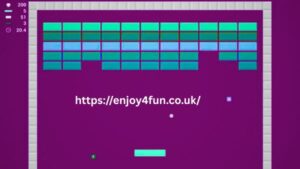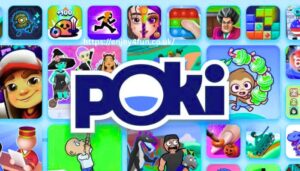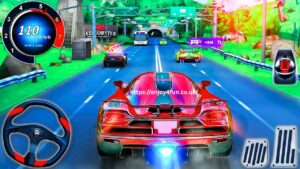If you’re a fan of creative and physics-based sandbox games, you’ve likely heard of Line Rider 2. Since its debut in 2006 as a Flash-based web game, Line Rider has inspired a cult following thanks to its unique gameplay. Players draw lines on a blank canvas, then watch as a small sledder, named Bosh, rides them—subject to real-world physics. The simplicity and freedom of the game made it an internet sensation.
But few realize there’s a sequel—a full-fledged, feature-rich continuation known as Line Rider or more formally, Line Rider 2 Unbound. This article explores everything you need to know about Line Rider 2, from its features and gameplay mechanics to why it’s still relevant in today’s gaming scene.
What Is Line Rider 2 Unbound?
Line Rider 2 Unbound is the enhanced, commercial sequel to the original Line Rider. Developed by inXile Entertainment and published by Infogrames, the game was released in 2008 for PC, Nintendo DS, and PlayStation Portable (PSP). While the core mechanics remain faithful to the original, Line Rider introduces a multitude of improvements that enhance the overall gameplay experience.
Key Features
- Story Mode: A narrative-driven experience with puzzles and objectives.
- New Tools and Line Types: Acceleration lines, scenery lines, and more.
- Track Sharing: Share and download custom tracks with the community.
- Multiplayer Support: Compete and collaborate with friends.
- Enhanced Physics Engine: Smoother and more realistic sledder motion.
Gameplay Overview
Line Rider 2 retains the core idea of drawing lines and setting a sledder into motion, but it expands the concept considerably.
Drawing Tools and Line Types
The most significant evolution in Line Rider 2 is its diverse line toolset. Unlike the original game, which only allowed basic lines, the sequel introduces:
- Red Lines: Standard track lines where Bosh can ride.
- Blue Lines: Acceleration zones that boost Bosh’s speed.
- Green Lines: Deceleration lines to slow down the sledder.
- Scenery Lines: Decorative elements that don’t affect gameplay.
These additions allow players to create complex and dynamic levels that go beyond simple rides—enabling everything from puzzle-based gameplay to narrative animations.
Story Mode A First for Line Rider
One of the standout features is Story Mode, a campaign-style series of challenges. Here, players are introduced to characters like Bosh’s rival, Chaz, and face off in creative competitions. Each level presents unique objectives such as reaching a goal zone, collecting objects, or triggering events through careful line placement.
Sandbox Creativity
Of course, at its heart, Line Rider is still a sandbox game. Players can spend hours crafting elaborate courses, visual masterpieces, or even short films using the game’s powerful editor. The option to save, load, and replay tracks makes experimentation more rewarding.
Why Line Rider 2 Still Matters
Despite being released over a decade ago, Line Rider 2 remains a fan-favorite for several reasons:
- 1. Creativity Unleashed
No two tracks are ever the same. Players can simulate roller coasters, gravity-defying stunts, or slow-motion cinematic scenes. It’s a unique intersection of art and physics that continues to inspire creators on platforms like YouTube and Reddit.
- 2. Learning Through Play
Line Rider 2 subtly teaches principles of physics, engineering, and game design. Understanding concepts like momentum, inertia, and friction becomes second nature. Many educators and STEM enthusiasts even recommend Line Rider as a fun learning tool.
- 3. Community and Sharing
Even though official support ended years ago, Line Rider 2’s modding and fan communities remain active. Websites and forums still host custom tracks, tutorials, and collaborative projects. The ability to export replays makes it easy to share content across social media.
Line Rider 2 vs. Line Rider Classic
| Feature | Line Rider (Classic) | Line Rider 2: Unbound |
|---|---|---|
| Release Year | 2006 | 2008 |
| Platforms | Browser (Flash), Mobile | PC, Nintendo DS, PSP |
| Line Types | Basic lines | Multiple (ride, boost, scenery) |
| Story Mode | No | Yes |
| Track Sharing | Limited | Extensive |
| Physics Engine | Basic | Advanced |
While the original Line Rider excels in minimalism and accessibility, Line Rider 2 caters to players looking for depth, narrative, and advanced creation tools.
Tips for Mastering Line Rider 2
If you’re new to Line Rider 2 or returning after a break, here are some tips to get the most out of the experience:
- 1. Start Simple
Begin with small, basic tracks to understand how different line types affect motion. Gradually introduce ramps, loops, and jumps.
- 2. Use the Zoom and Grid
Take advantage of the zoom function for precise editing. Enable the grid for better alignment and symmetry.
- 3. Combine Line Types
Mix acceleration and deceleration lines for speed control. Use scenery lines for storytelling or background aesthetics.
- 4. Watch Replays Frame-by-Frame
Analyze your track failures by replaying them slowly. This helps identify where Bosh loses momentum or crashes.
- 5. Get Inspired
Browse YouTube for creative Line Rider 2 tracks. Many creators share tutorials and breakdowns of their process.
Where to Play Line Rider 2 Today
Though Line Rider 2 was released on now-legacy platforms, it can still be enjoyed today:
- PC Version: Available via abandonware sites or second-hand retailers.
- Emulators: Play the DS or PSP versions using emulators like DeSmuME or PPSSPP.
- Line Rider Online (Classic): If you’re just curious, the original Line Rider is still playable online at .
Final Thoughts
Line Rider 2: Unbound is more than just a sequel—it’s a creative platform that builds upon the magic of its predecessor. Whether you’re a nostalgic gamer or a newcomer intrigued by sandbox physics games, Line Rider 2 offers endless possibilities for fun and creativity.
As indie gaming continues to thrive and user-generated content becomes central to game design, Line Rider 2 remains a timeless example of how player imagination can be the most powerful game mechanic.






